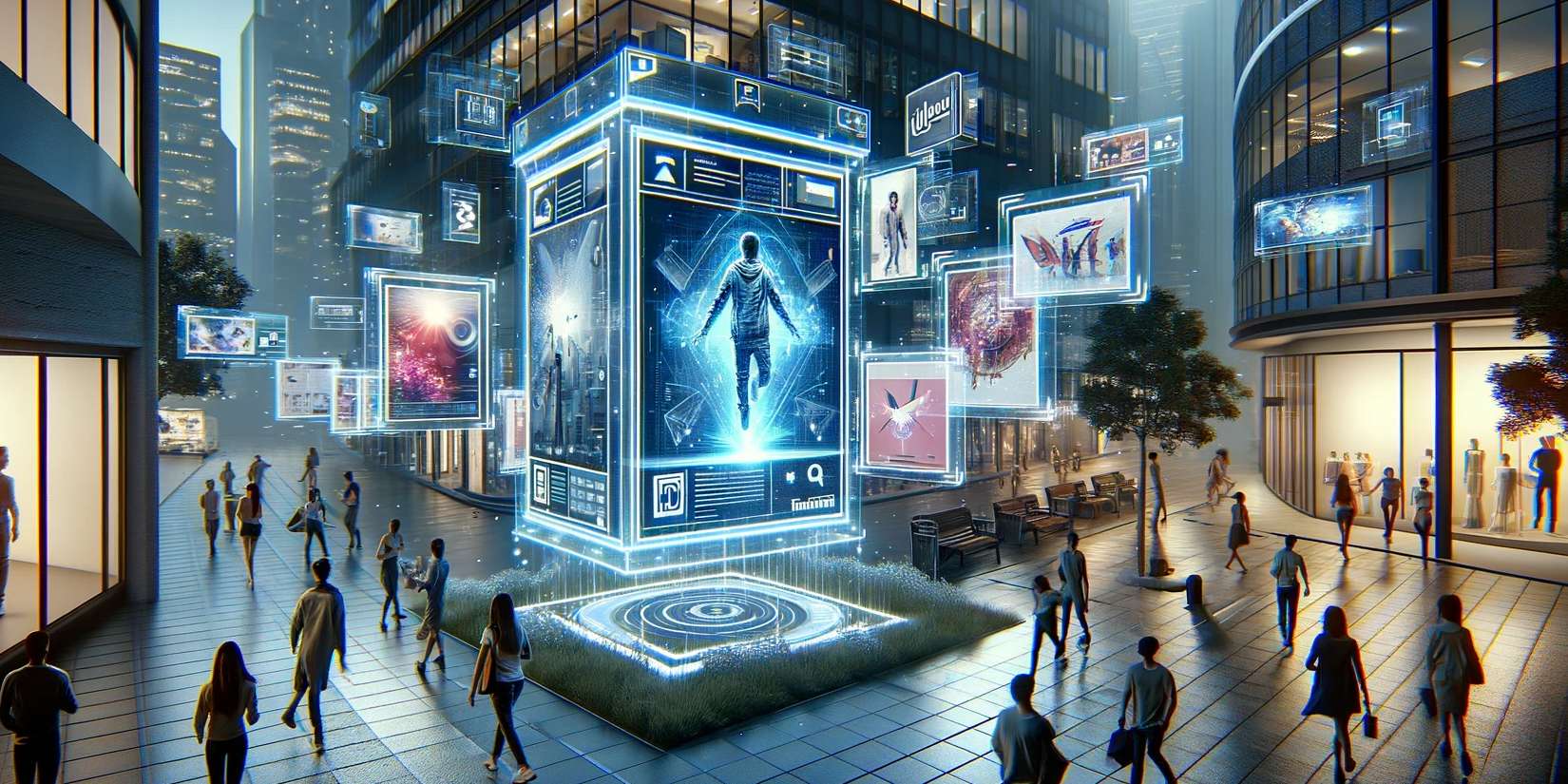In a world where the boundaries between physical and digital reality are becoming increasingly blurred, spatial computing is a groundbreaking development – especially for the advertising industry. This technology, which goes beyond simple screen displays and seamlessly integrates digital information into our real environment, opens up new horizons for creative advertising formats.
What is spatial computing?
Spatial computing comprises technologies that enable interaction with digital information in three-dimensional space. It refers to a spectrum of technologies such as augmented reality (AR), virtual reality (VR), mixed reality (MR) and sensor-based devices that work together to create a seamless fusion of digital and physical worlds. These technologies use advanced algorithms, sensors and cameras to recognize the environment and embed digital information organically into it.
The revolution in advertising through spatial computing
- Immersive brand experiences: Spatial computing enables advertisers to immerse users in fully immersive, interactive brand experiences. This ranges from virtual fitting rooms in the fashion industry to interactive product demonstrations in virtual showrooms.
- Location-based advertising: By incorporating real-time location data, advertisers can deliver hyperlocal advertising content that is directly tailored to the needs and interests of consumers in their immediate area.
- Enhanced creativity and storytelling: Spatial computing opens up new dimensions for creative storytelling in advertising. Advertisers can create narrative experiences that actively involve the user in the story and thus build a deeper emotional connection to the brand.
Challenges and risks:
- Data protection and ethical concerns: The collection and analysis of user data, especially location and movement data, raises important questions in terms of data protection and ethics.
- Accessibility and inclusion: The need for special devices and technologies can exclude certain population groups and thus limit the reach of advertising measures.
- High development costs: The development and implementation of spatial computing applications can be costly due to the technology and expertise required.
Practical examples and applications
- Retail: Stores are using AR to offer customers virtual fitting rooms, which is particularly beneficial in times of social distancing.
- Automotive industry: car buyers can use VR and AR applications to configure and test vehicles without being physically present.
- Event marketing: Major brands organize virtual events and concerts where participants can interact via VR glasses or smartphone apps.
Realworld examples
- AR effects on social media: Many brands are harnessing the power of spatial storytelling in advertising by using AR effects and filters on social media such as TikTok, Snapchat and Instagram. For example, e.l.f. Cosmetics offered virtual make-up trials, Samsung Electronics developed product visualization filters, and 3D shopping games were created for Amazon Prime Day.
- Branded AR effects for film advertising: In collaboration with TikTok and Universal Pictures, a branded AR effect was created for the promotion of the film “Halloween Ends”. This effect placed a figure with a knife in users’ real rooms, resulting in over 13 million views, 664,000 likes and over 43,000 user-generated videos.
- Immersive advertising experiences: Major brands are beginning to create fully immersive advertising experiences that extend from the physical world into digital worlds and video game ecosystems. With tools such as Google’s Geospatial Creator, even people without programming skills can now create immersive experiences anchored in the world in just a few minutes.
- VR experiences for music albums: In a partnership with EMI Records, Epic Games and WPP, Bastille’s latest album was presented as a VR experience on the Meta Quest 2. This experience seamlessly combined Bastille’s physical performance with virtual elements, creating a unique spatial musical experience.
Look into the future
The possibilities of spatial computing in advertising are almost limitless. As these technologies continue to develop and spread, it will be possible to create even more personalized and interactive advertising experiences. Companies that adopt these technologies early and invest in innovative advertising formats could gain a significant competitive advantage.
Conclusion
Spatial computing has the potential to fundamentally change the way we perceive and interact with advertising. However, the challenges in terms of data protection, accessibility and costs should not be underestimated. For advertisers willing to embrace this new technology and use it creatively, it offers an exciting opportunity to redefine the way they engage with customers.
